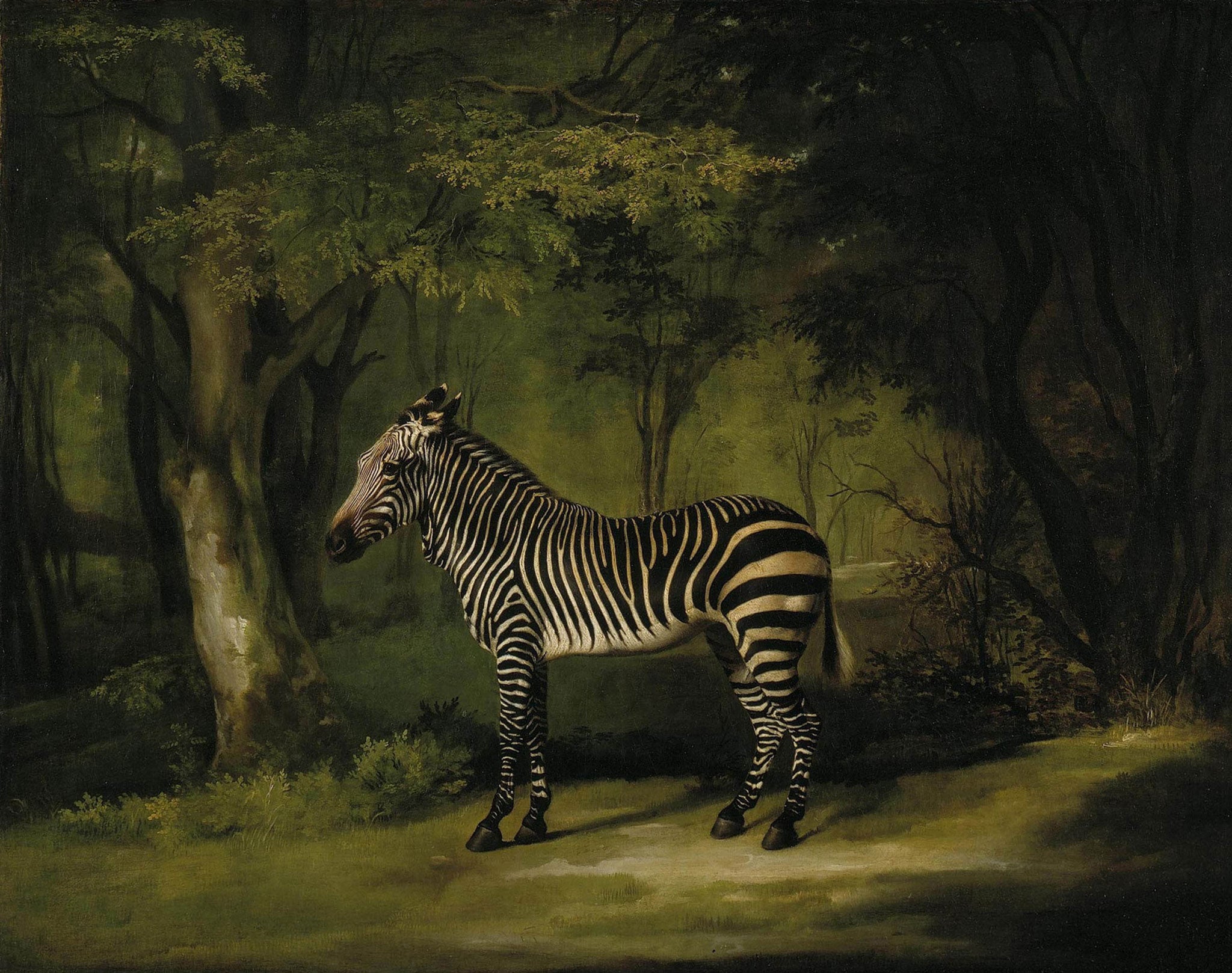Great works: Zebra (1762-3) by George Stubbs
Yale Center for British Art, New Haven

It was brought over in 1762, one of only two, from the Cape of Good Hope aboard HMS Terpsichore, "Noah's-ark-like" as one writer has put it, as a gift from the Governor to Queen Charlotte, and the eye of the ever insatiably curious George Stubbs fell upon it, eagerly.
It was the first wild animal he had ever painted, and this was the very first zebra to arrive in England, so it is unsurprising that it should have been regarded as a wonder. It was kept in the menagerie at Buckingham House (Palace), companioned by an elephant, and later on transferred to the Tower of London. Here is how one observer remembered it: "The Queen's she-ass was pestered with visits, and had all her hours employed from morning to night in satisfying the curiosity of the public. She had a sentinel and guard placed at the door of her stable... The crowds that resorted to the Asinine palace were exceeding great." Ribald songs were also written in its honour.
Stubbs has observed it quite soberly, with great and loving care, and he would have been delighted and surprised to see how much it differed from his beloved horses – that oh so fondleable dewlap beneath its neck, for example, and the way the ears point backwards and not forwards. In fact, the care is so great that we know exactly to which sub-species of zebra this animal belongs. It is a Cape mountain zebra, the smallest of its kind.
Marvellous to behold? Yes and no. There is something about this scene, its gentle pastoral setting (admire the delicately lit tracery of leaves that hang above its head), and the way in which the animal seems to be perfectly at peace in its sequestered patch of English woodland, that seems quite the opposite of marvellous – if by that we mean hectically wow-inducing. The animal is sensational in part because it seems to be entirely at ease, utterly becalmed, as a thing to be looked at. It has no natural place here in this English landscape, and yet it is here all the same. It looks as if it might have been let down from the gods by hoist. Viewed slightly differently, those glorious stripes make it look a little like an abstract painting that has been superimposed upon a theatrical painted backdrop of a sylvan scene.
Its wildness causes us to reflect upon the fact that it does not look especially wild, that Stubbs himself, being inclined towards the soberly anatomical, has not invested it with emotion of the kind that we might see had this been painted by, say, Géricault in the following century. There is no whiff of Romanticism about what Stubbs has done here.
Here it is then, a painstakingly delicate cut out of an animal, wonderfully elegant, and tonally at one – consider those marvellously understated yellows, for example, with which its haunches seems to be flushed – with the scene against which it poses. It feels a touch larger than its actual size in relation to the scene against which it is painted. We aggrandize it just a little by the way that we warm to it. Yes, this is surely a pose, which expects the gift of studied admiration in response. Stubbs himself feels, paradoxically, relaxed in its company.
Now here is an odd question: was it easy for Stubbs to paint this animal? Was it easier to paint than a horse? In a way, yes, one might speculate because, unlike horses, the zebra, came without the burden of the social opprobrium of bloodsports, which was very much alive when Stubbs was painting. Even though the beast notionally belonged to a queen, it also, we cannot help but feel, exists for its own sake in a free-floating Otherwhere, wafted in on board some ship, and could therefore be appraised with a kind of guiltless fondness.
About the artist: George Stubbs (1724-1806)
Surprisingly little is known about the life of the painter George Stubbs. Born in Liverpool, the son of a currier and leather seller, he was briefly apprenticed to a local artist called Hamlet Winstanley. In later life, he achieved great success as a painter of thoroughbred horses for such thoroughbred owners as the Marquess of Rockingham, the Duke of Richmond and other racing-mad Whigs.
Subscribe to Independent Premium to bookmark this article
Want to bookmark your favourite articles and stories to read or reference later? Start your Independent Premium subscription today.

Join our commenting forum
Join thought-provoking conversations, follow other Independent readers and see their replies